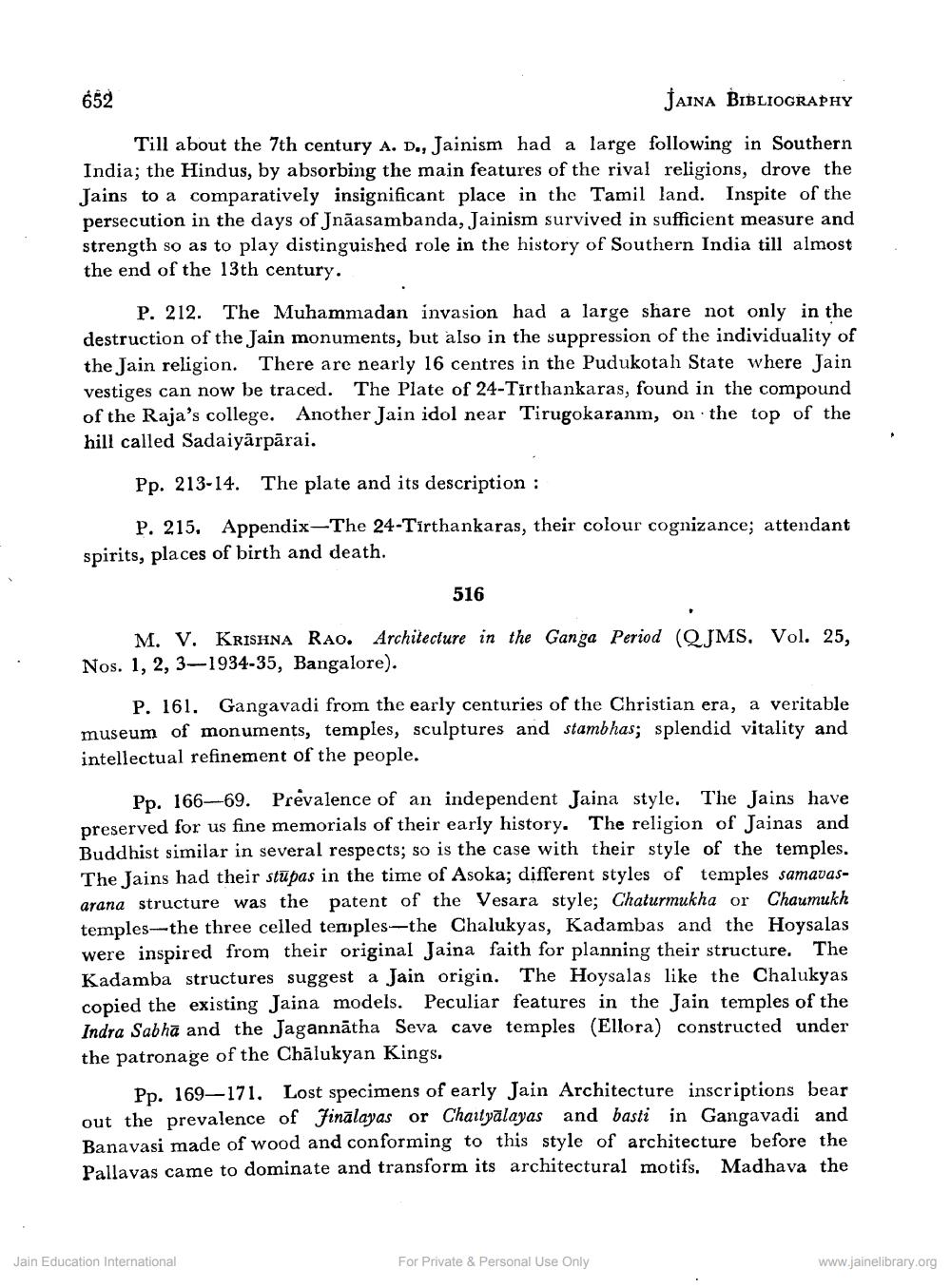________________
652
JAINA BIBLIOGRAPHY
Till about the 7th century A. D., Jainism had a large following in Southern India; the Hindus, by absorbing the main features of the rival religions, drove the Jains to a comparatively insignificant place in the Tamil land. Inspite of the persecution in the days of Jnāasambanda, Jainism survived in sufficient measure and strength so as to play distinguished role in the history of Southern India till almost the end of the 13th century.
P. 212. The Muhammadan invasion had a large share not only in the destruction of the Jain monuments, but also in the suppression of the individuality of the Jain religion. There are nearly 16 centres in the Pudukotah State where Jain vestiges can now be traced. The Plate of 24-Tirthankaras, found in the compound of the Raja's college. Another Jain idol near Tirugokaranm, on the top of the hill called Sadaiyārpārai.
Pp. 213-14. The plate and its description :
P. 215, Appendix-The 24-Tirthankaras, their colour cognizance; attendant spirits, places of birth and death.
516
M. V. KRISHNA RAO. Architecture in the Ganga Period (QJMS, Vol. 25, Nos. 1, 2, 3–1934-35, Bangalore).
P. 161. Gangavadi from the early centuries of the Christian era, a veritable museum of monuments, temples, sculptures and stambhas; splendid vitality and intellectual refinement of the people.
Pp. 166–69. Prevalence of an independent Jaina style. The Jains have preserved for us fine memorials of their early history. The religion of Jainas and Buddhist similar in several respects; so is the case with their style of the temples. The Jains had their stūpas in the time of Asoka; different styles of temples samavasarana structure was the patent of the Vesara style; Chaturmukha or Chaumukh temples-the three celled temples--the Chalukyas, Kadambas and the Hoysalas were inspired from their original Jaina faith for planning their structure. The Kadamba structures suggest a Jain origin. The Hoysalas like the Chalukyas copied the existing Jaina models. Peculiar features in the Jain temples of the Indra Sabha and the Jagannātha Seva cave temples (Ellora) constructed under the patronage of the Chalukyan Kings.
Pp. 169–171. Lost specimens of early Jain Architecture inscriptions bear out the prevalence of finālayas or Chartyalayas and basti in Gangavadi and Banavasi made of wood and conforming to this style of architecture before the Pallavas came to dominate and transform its architectural motifs. Madhava the
Jain Education International
For Private & Personal Use Only
www.jainelibrary.org




